How to properly connect two bulbs to one switch
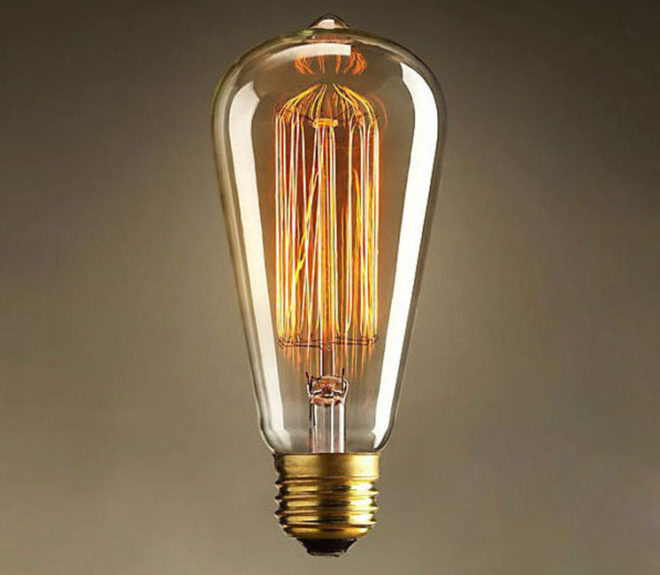
Situations when one switch controls two lighting devices at once are quite common. The only difference is that sometimes it is necessary to act simultaneously on both lamps with one switch, and in other cases it is necessary for each lamp to light up separately. And this means that in the first case we need a one-key switch, and in the second we will have to install a device with two keys. Let's talk about each of them separately and take a closer look at how to connect two bulbs to one switch.
The ability to connect two light bulbs to one switching device at once saves materials, time and effort, because you do not have to install a second switch, lay extra wires, gouge additional holes and grooves in the walls.
Preparatory work
No matter how many keys your switch has (one, two or three), the preparatory work will be the same.
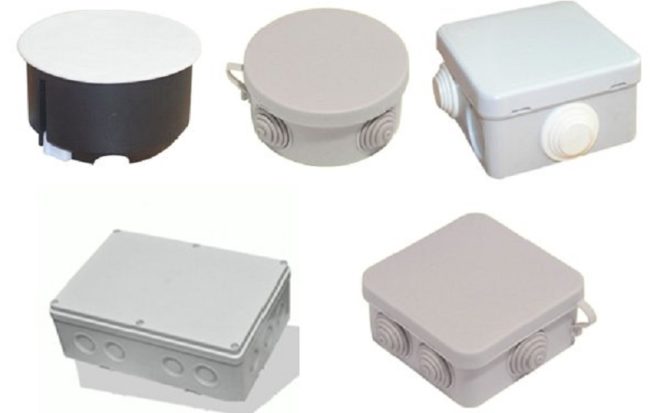
To begin with, in the room you need to mount a common junction box and a junction box for a switching device, it is also called a socket box in another way:
- If the walls in your room are made of PVC, plasterboard, wood or MDF panels, install a special crown with jagged edges on the drill and make a hole. Insert the junction box into it and fix it to the wall using self-tapping screws.
- For concrete or brick walls, punch the hole with a hammer drill or drill with an attachment on concrete surfaces. But in this case, the mounting boxes must also be fixed with plaster or alabaster mortar.

As a rule, work on the installation of holes is performed simultaneously with the laying of the strobes. This is done purely for aesthetic reasons, there is a lot of dirt from such construction work, and it is better to spray and remove once. Grooves are grooves in the wall surface, into which the connecting wires will then be laid. They can be done using various tools:
- Hammer and chisel. This is an old grandfather's method, its advantage is the complete absence of the cost of purchasing a tool (every man has a hammer and chisel). The disadvantage of this method of chipping is that it takes a lot of time and effort.
- Bulgarian. This tool is often called the worst of the best. Conveniently, grooves can be made quickly and without much effort. But it is precisely from the grinder that there is a lot of noise and dust, besides, it is not possible to make strobes of the same depth along the entire length, and it is almost impossible to work with a grinder in the corners of the room. So choose such a power tool as a last resort.
- Perforator. All that is required is to purchase a special attachment for it - a strober or a spatula. In all other respects there are no shortcomings, it is fast, convenient, the grooves are more or less even.
- Wall chaser. This is the perfect tool for this kind of work. Works efficiently, safely and quickly. The grooves are smooth, there is no dust, since the groove cutter is connected to a construction vacuum cleaner. It is convenient for them to work, the instrument does not emit a strong noise. The only drawback is the high price. But there are services where you can rent a wall chaser.
Briefly about chipping walls using the tools listed above is described in this video:
It is necessary to lay two-core wires into the grooves made and fix it with cement or alabaster mortar.
So, the preparatory work is over, the boxes are mounted, the wires are laid, you can connect the lights and the switch.
Switch device
Before connecting two bulbs to one switch, let's take a closer look at the device of this switching device. It is simple, and having figured out the design, you can easily cope with the connection diagram later.
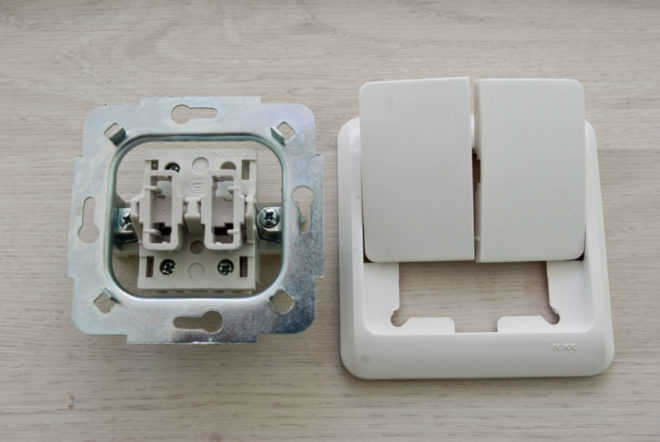
The main component of the entire mechanism is the working part, which is directly installed in the socket. It looks like a metal structure, a drive is fixed on it, with the help of which the device is turned on and off. If we consider in detail, then the drive, in fact, is a moving contact, which, changing its position, closes or opens the circuit between two fixed contacts.
One of these fixed contacts is called incoming and must be connected to the phase wire from the supply network. The second contact is called outgoing, it is connected to the phase wire going to the light bulbs. With the correct position of the switch, these two fixed contacts must be open between themselves, the device is considered disconnected, there is no circuit between the supply network and the luminaire, the lamp does not light up. As soon as you press the switch button, the movable contact closes between two fixed ones, through the formed closed circuit from the supply network, the voltage goes to the lamp, and the lamp is on.
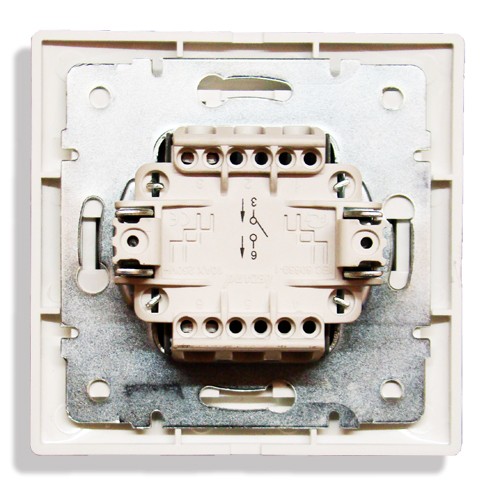
For safety, the working part of the switch is placed in a dielectric material (porcelain or plastic) housing.
The second component of the switches is protection, this is a frame and keys, usually they are made of plastic. The key is fixed on the drive of the working part, with its help the person presses, thereby changing the position of the movable contact, and thus controls the lighting. The frame performs the function of protection against accidental contact of a person with the contact part of the switch, which is energized. It covers and isolates it all, that is, there is no possibility of touching the working parts. The frame is secured with plastic clips or screws.
The only difference between a 2-key switch is that it has two outgoing contacts. Each of them must be connected to the phase wire of one of the two bulbs.
Scheme with a two-button switch
Before connecting the wires to the circuit, you must have installed:
- Two lamps for one light bulb. For example, one is in the kitchen, the other is in the hallway.
- Junction box under the ceiling (15-30 cm below the ceiling). If the room already has a junction box, you can use it. The main thing is that there is not a lot of commutation and that it is convenient for you to work.
- A socket for a two-button switch. As a rule, it is installed at a distance of 90-100 cm from the floor level.
- Wires in grooves must be laid between all these elements. Please note that in the case of a two-button switch, a three-core wire must be connected to it from the junction box.
Now we need to connect all this electrically so that voltage comes from the power source to the bulbs.
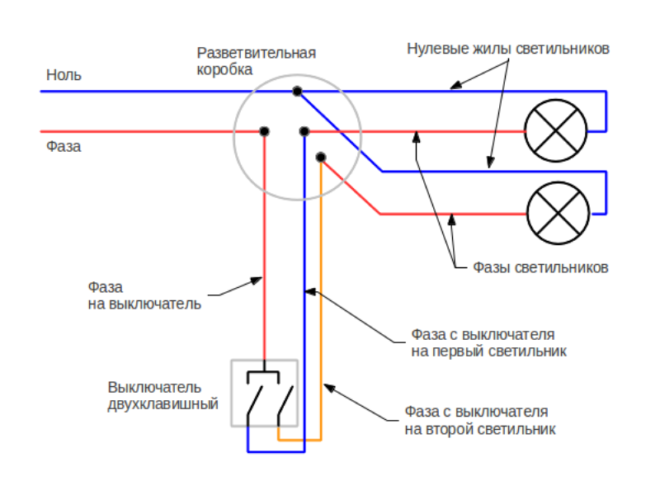
Two cores of wire from the supply network come to the junction box - zero and phase. Use an indicator screwdriver to identify the phase conductor. Use a screwdriver to touch both cores alternately. If you touch zero, the indicator window will not light up. If the window lights up, it means that you have found a phase vein. Mark it carefully with duct tape.
Now de-energize your workplace to make connections. It is necessary to turn off the machine that is supplied with voltage. Now, in many houses and apartments, whole panels are mounted, in which there are automatic machines that turn off each room, respectively.If you do not have this yet, then you will have to turn off the water machine for the apartment. Check the absence of voltage and get to work.
Three cores of wire are inserted into the socket. Strip the insulating layer on them by 1 cm (this is done with a knife). Connect one core to the incoming contact of the switch, connect its other end in the junction box to the phase conductor of the supply network. Connect the other two wires to the two outgoing contacts of the switch. Accordingly, connect their second ends in a junction box with phase conductors from one and the second lamp.
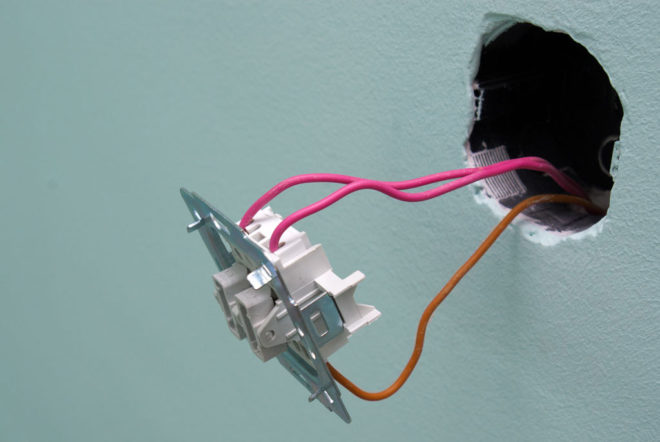
Now you can position the working part of the switch in the socket box, fix, install the protective frame and keys.
There will be one more connection in the junction box, zero cores coming from the fixtures, connect to zero from the supply network.
In the luminaire holders there are two contacts - one lateral for connecting a zero core, and a central one, a phase is connected to it. Make these connections.
Check that all contacts are reliable, but we advise you to insulate the twist points after you make sure that the switch is working correctly. To check the assembled circuit, apply voltage to the apartment (that is, turn on the input machine). Both keys of the switching device are in the off position, the lights in the kitchen and in the corridor are off. Press one key - the light came on in the kitchen, turn on the second - the light appeared in the corridor. Also, turn off the first and second keys one by one, the light went out first in the kitchen, then in the corridor. Everything works correctly.
Turn off the input machine again and insulate the twists in the junction box with insulating tape, you can still put on PVC tubes on top.
A detailed circuit with a double switch is discussed in this video:
Scheme with a one-button switch
Everything is absolutely the same, only in this case four two-wire wires come to the junction box - one from the supply network, the second from a one-button switch, and two from bulbs.
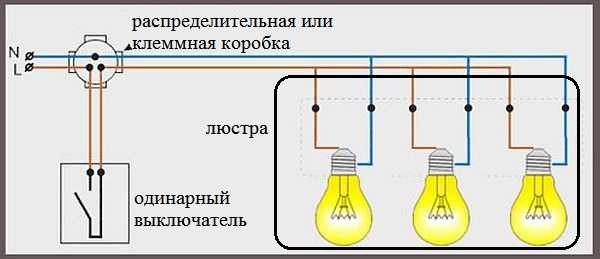
The following connections are made in the box:
- the zero core of the network wire is connected to the zero cores of incandescent lamps;
- the phase conductor of the network wire is connected to the conductor going to the input of the switch;
- the core from the outgoing contact of the switch is connected to two phase cores of the lamps.
This arrangement applies when incandescent bulbs are installed in different directions. If in one direction, then to save the wire, the second light bulb can be connected from the cartridge of the first.
As you can see, there is nothing complicated. If you are in the slightest degree familiar with electrical engineering and physics, then you can easily connect two bulbs to one switch on your own.




